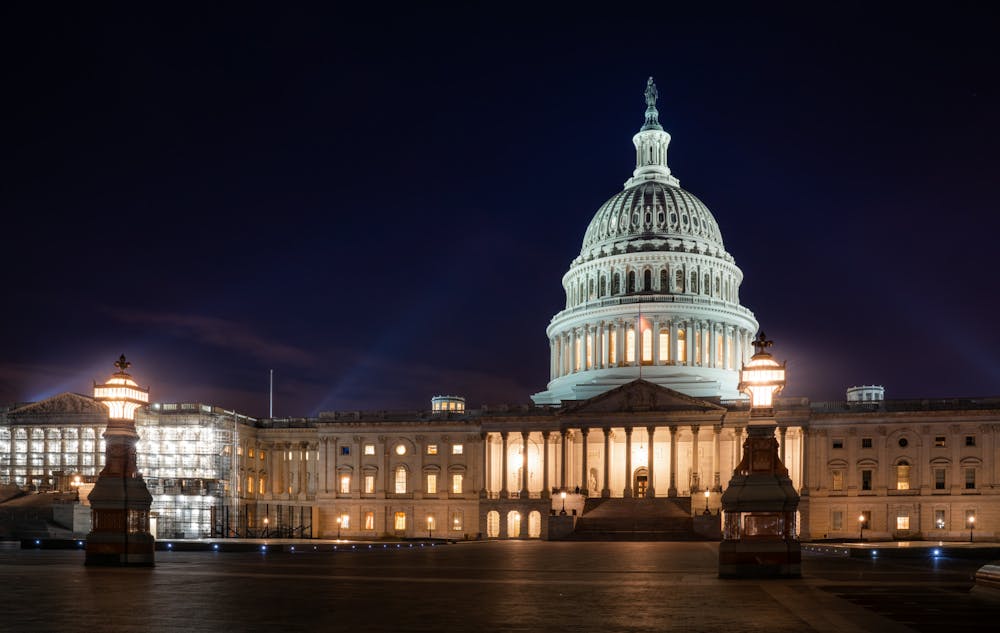Article One of the U.S. Constitution establishes the House of Representatives and the Senate. The House is based on population size while the Senate ensures equal representation for each state. The hierarchy is said to have been designed to “cool House legislation just as a saucer was used to cool hot tea.” But as populations of states widely vary, this equal representation in the Senate has a questionable place in our democracy.
Currently, the legislative body is split 50-50 along party lines with 50 senators representing 41 million fewer people than the other 50. This discrepancy in representation will only get worse as population projections for 2040 expect 67% of the population to reside in 15 states, electing only 30% of the Senate.
If 33% of the population is predicted to elect 70% of Senate seats, we must revisit the structure of our government and ask ourselves, is the Senate a hindrance to democracy?
The simple answer is yes. The American democracy derives its power from the people; it would be anti-democratic (and anti-American) to allow a minority to have more say than the majority. There is no justification that can defend the continuation of the Senate in its current form while claiming a commitment to a free democracy.
A reform idea that has been floating around is to reconsider the filibuster. Recognizing that its use has jumped tremendously in the last 15 years, as evidenced by the increase in cloture motions, the filibuster has been used as an obstructive measure rather than a tool to keep debate alive.
As it goes, the party in control usually favors getting rid of the filibuster in order to make it easier to pass laws on their agenda. However, abolishing the filibuster would get rid of one of the most protective strategies the minority party has.
As the Senate becomes increasingly anti-democratic, and abolishing the filibuster without any further reform is problematic, there are still many other possible solutions worth reviewing. This includes requiring senators to actually physically hold the floor during a filibuster or only considering present and voting senators for the cloture vote. These would promote healthy deliberation in the Senate as the filibuster was originally intended to do.
Perhaps a feasible reform would be flipping the roles of the Senate and House during the legislative process. This would allow the House to have the final say in the passage of bills. Those who worry over the fair representation of small states as well as those who advocate for the fair passage of bills supported by the majority of Americans may both feel satisfied. Even so, this still leaves the population projection unaddressed. It is still unfair to have 70 senators representing 33% of Americans.
Since the issue of malapportioned representation would still persist, I propose abolishing the Senate altogether and ensuring that every House member represents a district ideally equal to the size of the smallest state’s population. If each House member represented the same number of people, it would make certain that every American is equally represented.
Nevertheless, Article Five says that no state can be denied equal representation in the Senate. This means abolishing the Senate, the body responsible for states’ having equal representation, is impossible unless we scrap our entire Constitution.
Another possible reform that keeps the structure of our legislative branch intact is to redraw state lines to eliminate the small vs big state distinction. To avoid gerrymandering and giving one party any structural advantages, the process would require a nonpartisan commission to redraw the state borders and evaluate them periodically, potentially every 10 years with the census. However, that could only come after an amendment to the Constitution was made, seeing that Article Four says no new states can be created from another state or by joining states without consent from those states and Congress.
In a perfect world, if each state had roughly equal populations, malapportionment would no longer be a cause for concern, and the Senate would still protect individual state rights while the House would be able to receive a more nuanced understanding of their constituents. The House would also be reformed in the process, given that each state would now have the same number of representatives. Importantly, this reform also ensures equal voting power for everyone.
Because no one gives up their power willingly, it’s important to recognize that all of these reforms are highly unlikely to be enacted. Today, the process to pass some legislation, let alone an amendment to the Constitution, requires a seemingly unachievable level of bipartisanship. Even when issues that are widely agreed upon by the entire population come to a vote, the undemocratic Senate is unable to do its job.
For example, in 2013, Democratic Senator from West Virginia Joe Manchin and Republican Senator from Pennsylvania Pat Toomey proposed a gun control bill that extended background checks to gun shows and Internet sales. The bill died after not getting past a Republican-led filibuster, despite polls showing that 90% of Americans supported it.
Notice how I never talk about political parties; party affiliation must be left out of this conversation. There should be a fierce commitment to free democracy and healthy debate at the heart of our government, not a political pissing match to pass legislation that advantage any one party.
The goal of politics should be to convince more people that the ideas of one agenda are better than alternatives, not to have people blindly pledge their loyalty to policies based on what party writes them. By reforming our Senate, we ensure that our government is always in the hands of We the People.
Melissa Arboleda is a junior from Wappingers Falls, N.Y. studying Molecular and Cellular Biology. She is the vice president of Advocates for Reproductive and Sexual Health.





